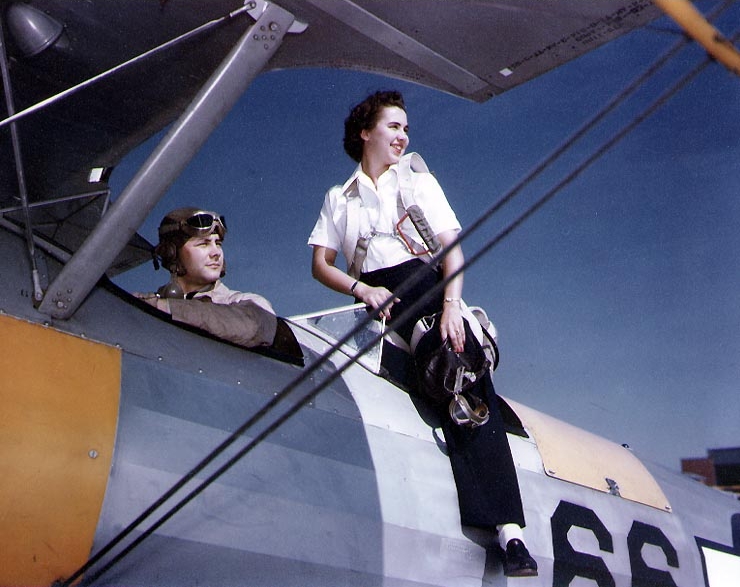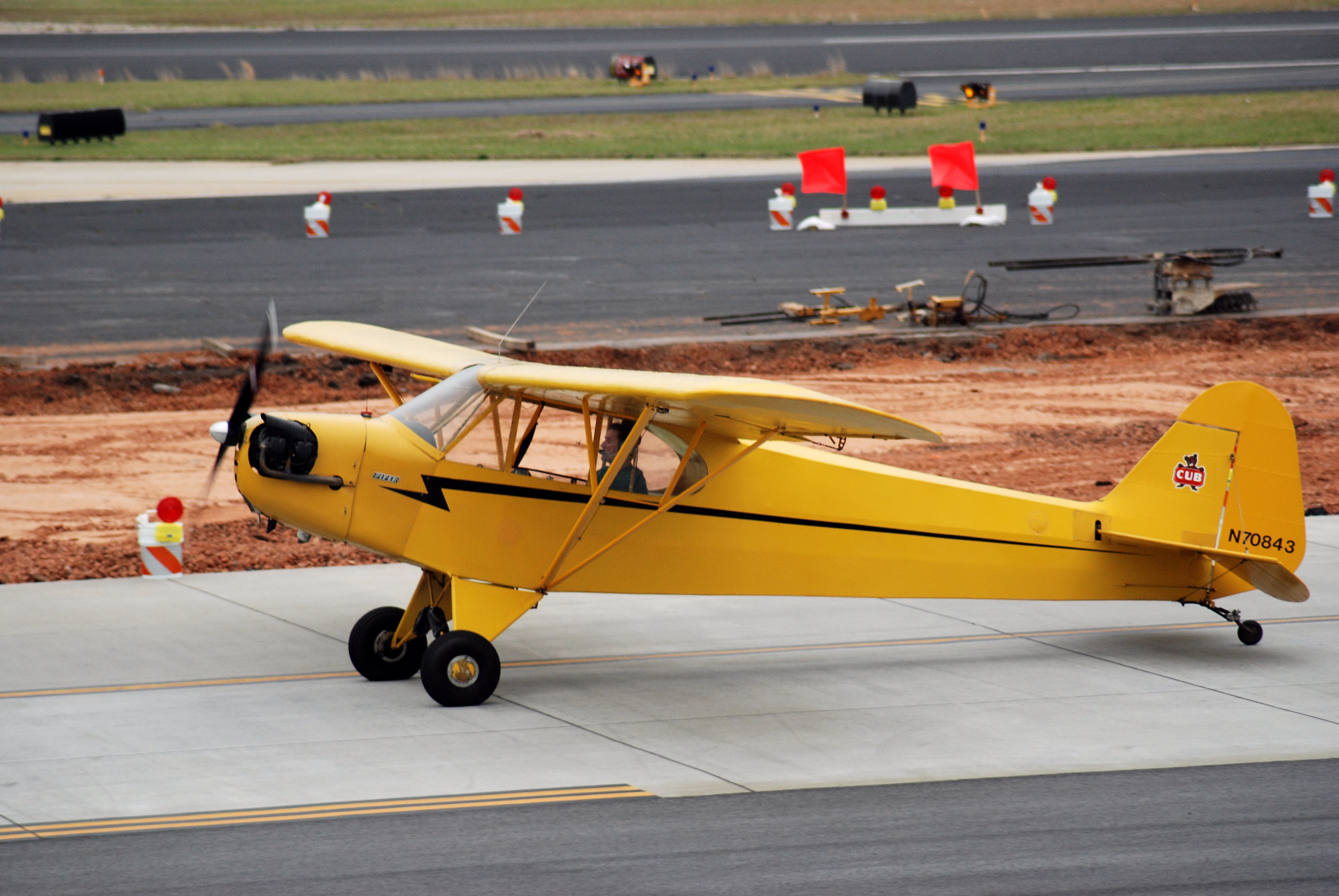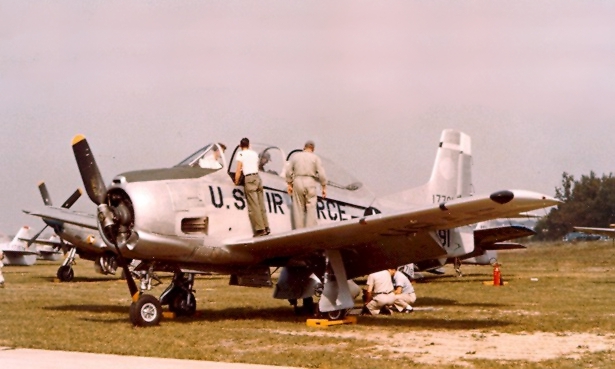|
Warhawk Air Museum
The Warhawk Air Museum is an aviation museum located in Nampa, Idaho. History The museum was founded on 6 March 1989 by John and Sue Paul. In 2021, it announced plans for an expansion. Collection * Aero S-106 * Bell UH-1C Iroquois * Cessna L-19 Bird Dog * Curtiss Kittyhawk I * Curtiss Kittyhawk IV * Fokker Dr.I * Lockheed F-104A Starfighter * Naval Aircraft Factory N3N * North American F-86F Sabre * North American P-51C Mustang * PZL-Mielec Lim-5 * Republic F-84G Thunderjet Visiting aircraft In addition to the permanent collection, the museum also previously featured a number of visiting aircraft: * Eastern FM-2 Wildcat * Eastern TBM Avenger * North American P-51D Mustang * North American SNJ-6 * North American T-28A Trojan The North American Aviation T-28 Trojan is a radial-engine military trainer aircraft manufactured by North American Aviation and used by the United States Air Force and United States Navy beginning in the 1950s. Besides its use as a ... [...More Info...] [...Related Items...] OR: [Wikipedia] [Google] [Baidu] |
Nampa, Idaho
Nampa () is the largest city in Canyon County, Idaho. Its population was 100,200 at the time of the 2020 Census. It is Idaho's third-most populous city. Nampa is about west of Boise along Interstate 84, and six miles (10 km) west of Meridian. It is the second principal city of the Boise metropolitan area. The name "Nampa" may have come from a Shoshoni word meaning either moccasin or footprint.The Origin of the Name Nampa , May 1965 History Nampa had its beginnings in the early 1880s when the[...More Info...] [...Related Items...] OR: [Wikipedia] [Google] [Baidu] |
Eastern FM-2 Wildcat
The Grumman F4F Wildcat is an American carrier-based fighter aircraft that entered service in 1940 with the United States Navy, and the British Royal Navy where it was initially known as the Martlet. First used by the British in the North Atlantic, the Wildcat was the only effective fighter available to the United States Navy and Marine Corps in the Pacific Theater during the early part of the Second World War. The disappointing Brewster Buffalo was withdrawn in favor of the Wildcat and replaced as aircraft became available. With a top speed of , the Wildcat was outperformed by the faster (), more maneuverable, and longer-ranged Mitsubishi A6M Zero. US Navy pilots, including John "Jimmy" Thach, a pioneer of fighter tactics to deal with the A6M Zero, were greatly dissatisfied with the Wildcat's inferior performance against the Zero in the battles of the Coral Sea and Midway. The Wildcat has a claimed air combat kill-to-loss ratio of 5.9:1 in 1942 and 6.9:1 for the entire war.Pol ... [...More Info...] [...Related Items...] OR: [Wikipedia] [Google] [Baidu] |
Museums In Canyon County, Idaho
A museum ( ; plural museums or, rarely, musea) is a building or institution that cares for and displays a collection of artifacts and other objects of artistic, cultural, historical, or scientific importance. Many public museums make these items available for public viewing through exhibits that may be permanent or temporary. The largest museums are located in major cities throughout the world, while thousands of local museums exist in smaller cities, towns, and rural areas. Museums have varying aims, ranging from the conservation and documentation of their collection, serving researchers and specialists, to catering to the general public. The goal of serving researchers is not only scientific, but intended to serve the general public. There are many types of museums, including art museums, natural history museums, science museums, war museums, and children's museums. According to the International Council of Museums (ICOM), there are more than 55,000 museums in 202 countr ... [...More Info...] [...Related Items...] OR: [Wikipedia] [Google] [Baidu] |
Aerospace Museums In Idaho
Aerospace is a term used to collectively refer to the atmosphere and outer space. Aerospace activity is very diverse, with a multitude of commercial, industrial and military applications. Aerospace engineering consists of aeronautics and astronautics. Aerospace organizations research, design, manufacture, operate, or maintain both aircraft and spacecraft. The beginning of space and the ending of the air is considered as 100 km (62 mi) above the ground according to the physical explanation that the air pressure is too low for a lifting body to generate meaningful lift force without exceeding orbital velocity. Overview In most industrial countries, the aerospace industry is a cooperation of the public and private sectors. For example, several states have a civilian space program funded by the government, such as National Aeronautics and Space Administration in the United States, European Space Agency in Europe, the Canadian Space Agency in Canada, Indian Space Resea ... [...More Info...] [...Related Items...] OR: [Wikipedia] [Google] [Baidu] |
1989 Establishments In Idaho
File:1989 Events Collage.png, From left, clockwise: The Cypress Street Viaduct, Cypress structure collapses as a result of the 1989 Loma Prieta earthquake, killing motorists below; The proposal document for the World Wide Web is submitted; The Exxon Valdez oil tanker runs aground in Prince William Sound, Alaska, causing a large Exxon Valdez oil spill, oil spill; The Fall of the Berlin Wall begins the downfall of Communism in Eastern Europe, and heralds German reunification; The United States United States invasion of Panama, invades Panama to depose Manuel Noriega; The Singing Revolution led to the independence of the Baltic states of Estonia, Latvia, and Lithuania from the Soviet Union; The stands of Hillsborough Stadium in Sheffield, Yorkshire, where the Hillsborough disaster occurred; 1989 Tiananmen Square protests and massacre, Students demonstrate in Tiananmen Square, Beijing; many are killed by forces of the Chinese Communist Party., 300x300px, thumb rect 0 0 200 200 1989 Loma ... [...More Info...] [...Related Items...] OR: [Wikipedia] [Google] [Baidu] |
Veterans History Project
The Veterans History Project of the Library of Congress American Folklife Center (commonly known as the Veterans History Project) was created by the United States Congress in 2000 to collect and preserve the firsthand remembrances of U.S. wartime veterans. Its mandate ensures future generations may hear directly from those who served to better understand the realities of war. It is a special project of the American Folklife Center, a research center of the Library of Congress. The program is conducted through Congressional offices and relies on a national network of veteran service organizations, universities, secondary schools, community groups and the general public to record interviews according to program guidelines. These and original letters, diaries, photos, memoirs and historic documents related to a veteran's wartime service are then preserved at the Library of Congress. Through 2010 the project held more than 65,000 collections and was considered the largest oral history ... [...More Info...] [...Related Items...] OR: [Wikipedia] [Google] [Baidu] |
Stearman Kaydet
The Stearman (Boeing) Model 75 is a biplane formerly used as a military trainer aircraft, of which at least 10,626 were built in the United States during the 1930s and 1940s. Stearman Aircraft became a subsidiary of Boeing in 1934. Widely known as the Stearman, Boeing Stearman, or Kaydet, it served as a primary trainer for the United States Army Air Forces, the United States Navy (as the NS and N2S), and with the Royal Canadian Air Force as the Kaydet throughout World War II. After the conflict was over, thousands of surplus aircraft were sold on the civilian market. In the immediate postwar years, they became popular as crop dusters and sports planes, and for aerobatic and wing walking use in air shows. Design and development The Kaydet was a conventional biplane of rugged construction, with a large, fixed tailwheel undercarriage, and accommodation for the student and instructor in open cockpits in tandem. The radial engine was usually not cowled, although som ... [...More Info...] [...Related Items...] OR: [Wikipedia] [Google] [Baidu] |
Piper L-4 Grasshopper
The Piper J-3 Cub is an American light aircraft that was built between 1938 and 1947 by Piper Aircraft. The aircraft has a simple, lightweight design which gives it good low-speed handling properties and short-field performance. The Cub is Piper Aircraft's most-produced model, with nearly 20,000 built in the United States. Its simplicity, affordability and popularity invokes comparisons to the Ford Model T automobile. The aircraft is a high-wing, strut-braced monoplane with a large-area rectangular wing. It is most often powered by an air-cooled, flat-4 piston engine driving a fixed-pitch propeller. Its fuselage is a welded steel frame covered in fabric, seating two people in tandem. The Cub was designed as a trainer. It had great popularity in this role and as a general aviation aircraft. Due to its performance, it was well suited for a variety of military uses such as reconnaissance, liaison and ground control. It was produced in large numbers during World War II as th ... [...More Info...] [...Related Items...] OR: [Wikipedia] [Google] [Baidu] |
North American T-28A Trojan
The North American Aviation T-28 Trojan is a radial-engine military trainer aircraft manufactured by North American Aviation and used by the United States Air Force and United States Navy beginning in the 1950s. Besides its use as a trainer, the T-28 was successfully employed as a counter-insurgency aircraft, primarily during the Vietnam War. It has continued in civilian use as an aerobatics and warbird performer. Design and development On September 24, 1949, the XT-28 (company designation NA-159) was flown for the first time, designed to replace the T-6 Texan. The T-28A arrived at the Air Proving Ground, Eglin Air Force Base, Florida, in mid-June 1950, for suitability tests as an advanced trainer by the 3200th Fighter Test Squadron, with consideration given to its transition, instrument, and gunnery capabilities. Found satisfactory, a contract was issued and between 1950 and 1957, a total of 1,948 were built. Following the T-28's withdrawal from U.S. military service, a numb ... [...More Info...] [...Related Items...] OR: [Wikipedia] [Google] [Baidu] |
North American SNJ-6
The North American Aviation T-6 Texan is an American single-engined advanced trainer aircraft used to train pilots of the United States Army Air Forces (USAAF), United States Navy, Royal Air Force, Royal Canadian Air Force and other air forces of the British Commonwealth during World War II and into the 1970s. Designed by North American Aviation, the T-6 is known by a variety of designations depending on the model and operating air force. The United States Army Air Corps (USAAC) and USAAF designated it as the AT-6, the United States Navy the SNJ, and British Commonwealth air forces the Harvard, the name by which it is best known outside the US. Starting in 1948, the new United States Air Force (USAF) designated it the T-6, with the USN following in 1962. It remains a popular warbird used for airshow demonstrations and static displays. It has also been used many times to simulate various historical aircraft, including the Japanese Mitsubishi A6M Zero. A total of 15,495 T-6s o ... [...More Info...] [...Related Items...] OR: [Wikipedia] [Google] [Baidu] |
Grumman TBF Avenger
The Grumman TBF Avenger (designated TBM for aircraft manufactured by General Motors) is an American World War II-era torpedo bomber developed initially for the United States Navy and Marine Corps, and eventually used by several air and naval aviation services around the world. The Avenger entered U.S. service in 1942, and first saw action during the Battle of Midway. Despite the loss of five of the six Avengers on its combat debut, it survived in service to become the most effective and widely-used torpedo bomber of World War II, sharing credit for sinking the super-battleships and (the only ships of that type sunk exclusively by American aircraft while under way) and being credited for sinking 30 submarines. Greatly modified after the war, it remained in use until the 1960s.Wheeler 1992, p. 53. Design and development The Douglas TBD Devastator, the U.S. Navy's main torpedo bomber introduced in 1935, was obsolescent by 1939. Bids were accepted from several companies, but Grum ... [...More Info...] [...Related Items...] OR: [Wikipedia] [Google] [Baidu] |
Republic F-84G Thunderjet
The Republic F-84 Thunderjet was an American turbojet fighter-bomber aircraft. Originating as a 1944 United States Army Air Forces (USAAF) proposal for a "day fighter", the F-84 first flew in 1946. Although it entered service in 1947, the Thunderjet was plagued by so many structural and engine problems that a 1948 U.S. Air Force review declared it unable to execute any aspect of its intended mission and considered canceling the program. The aircraft was not considered fully operational until the 1949 F-84D model and the design matured only with the definitive F-84G introduced in 1951. In 1954, the straight-wing Thunderjet was joined by the swept-wing F-84F Thunderstreak fighter and RF-84F Thunderflash photo reconnaissance aircraft. The Thunderjet became the USAF's primary strike aircraft during the Korean War, flying 86,408 sorties and destroying 60% of all ground targets in the war as well as eight Soviet-built MiG fighters. Over half of the 7,524 F-84s produced served with N ... [...More Info...] [...Related Items...] OR: [Wikipedia] [Google] [Baidu] |






.jpg)

